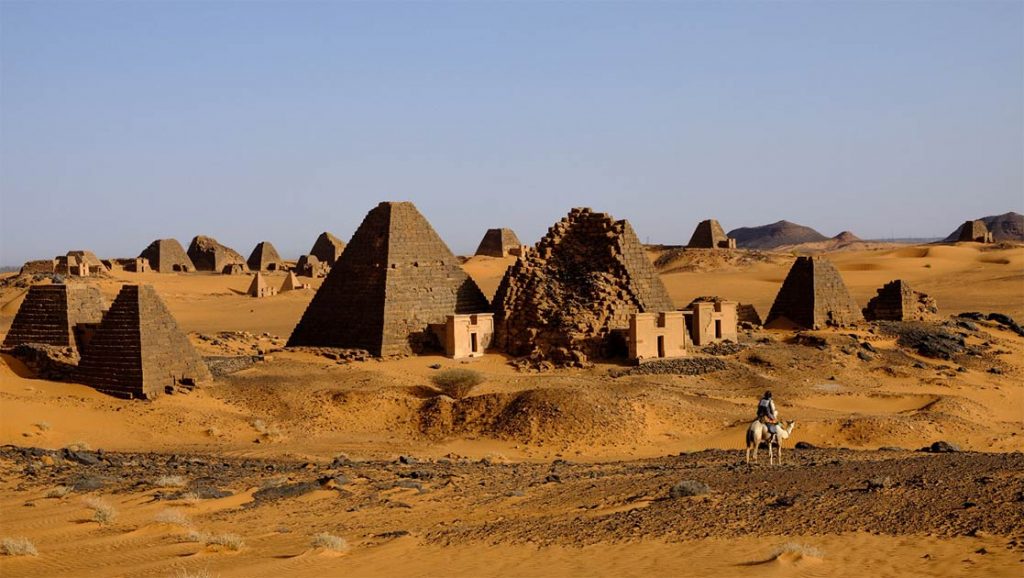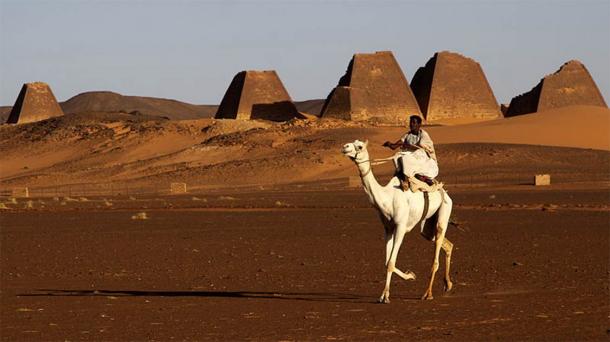Record Floods Threaten Pyramid Sites in Sudan

Worst River Nile Flooding in Over a Century Threatens Sudanese Pyramids
The ancient Sudan pyramids, which stood for centuries, are now threatened with floods. The Nile River burst its banks and in the African country several people have already been killed.

Increasing waters are also threatening to some of the most important historic sites in all sub-Saharan Africa, the famed Sudanese pyramids.
Sudan’s farmers have been dependent for generations on the Nile. There is some flooding every year, but this year the waters of Africa’s biggest river have reached unprecedented levels.

As France 24 reports, local archaeologists said that ‘some of the highest river levels ever reported’ resulted in catastrophic flooding in Sudan. The floods are believed to be the worst in over a century.
National Disaster in Sudan as Blue Nile Bursts Its Banks
So far, some “99 recorded deaths have been caused by drowning, mudslides and buildings collapsing,” explained the BBC.
The majority of states have been impacted and almost half a million people have been left homeless. Last week the government declared a state of emergency across the country.
The flooding is threatening the Al-Bajrawiya archaeological site, once known as Meroë, that was the capital of an ancient African empire.
The city of Meroë was founded in the 9 th century BC and was part of the Kushite Empire , that at one time conquered Egypt.

Later the city became the capital of the Kushite state, also known as the Meroitic Empire, an empire so powerful it resisted Roman attempts to conquer it in the first century AD. It eventually fell after being invaded by the Kingdom of Aksum from Ethiopia.
Famed Nubian Pyramids at Al-Bajrawiya
The UNESCO World Heritage Site at Al-Bajrawiya is 125 miles (195 km) north of Khartoum. It boasts a large number of important ruins including temples and palaces. These, the BBC describes “testify to the wealth and power of the Kushite State.” The best-known remains at the site are its pyramids, originally created under the influence of Egypt.
The Sudanese pyramids are the remaining vestiges of massive funerary monuments to dead monarchs which were later adopted by provincial elites. Also known as Nubian pyramids, they are smaller than the ones to the north and typically have offering temples at their base, with distinctive Kushite designs.
They have narrow bases and steep angles on the sides and have “decorative elements from the cultures of Pharaonic Egypt, Greece, and Rome,” reports The Atlantic . The pyramids are situated in a number of royal cemeteries at Al-Bajrawiya.
Flooding Danger: Archaeologists Build Sandbag Walls in Attempt to Save Al-Bajrawiya
Typically, this site is some 500 meters (1640 feet) from the waters of the Blue Nile. “The floods had never affected the site before,” Marc Maillot, leader of the French Archaeological Unit in the Sudan Antiquities Service, told Naharnet.
Teams have built defenses out of sandbag walls and are pumping out water to save the ruins and pyramids of Al-Bajrawiya. Sudan’s Minister of Culture visited the UNESCO World Heritage site to monitor what was being done to save it. Maillot is quoted by Al Jazeera as explaining that the “situation is currently under control, but if the level of the Nile continues to rise, the measures taken may not be sufficient.”

While the threat to the pyramids and the ruins of the Kushite capital may have receded, there are growing concerns. The BBC quotes OCHA, the UN’s humanitarian organization, as warning that “the situation could deteriorate over the coming days.”
This is because weather forecasters have predicted heavy rain in Ethiopia and Sudan, and this could lead to the mighty Blue Nile flooding again. It is believed that several other archaeological sites in the vast African nation are also at risk if waters rise any further.
If the floods return, the UNESCO listed site and its remarkable pyramids could be endangered. Few outsiders in recent years have visited the pyramids because of international western sanctions on the Khartoum government, and many of Sudan’s historic monuments have been damaged by looters looking for gold .
Sudan is believed to be home to more pyramids than Egypt, though many of these have not been surveyed or excavated.